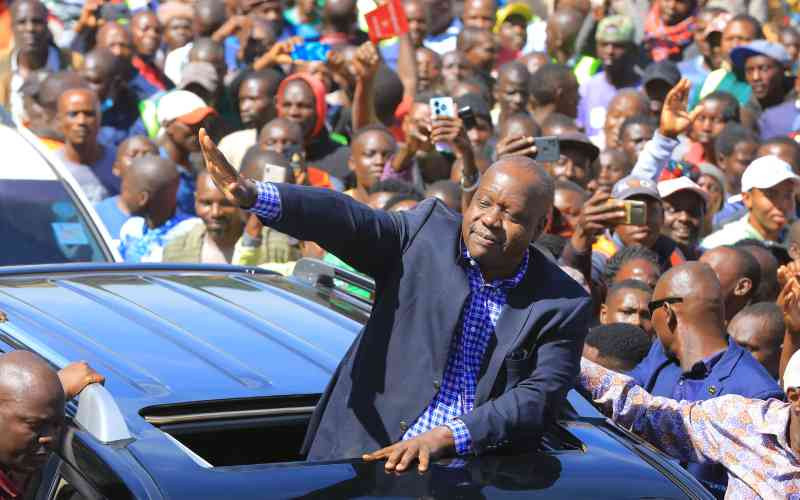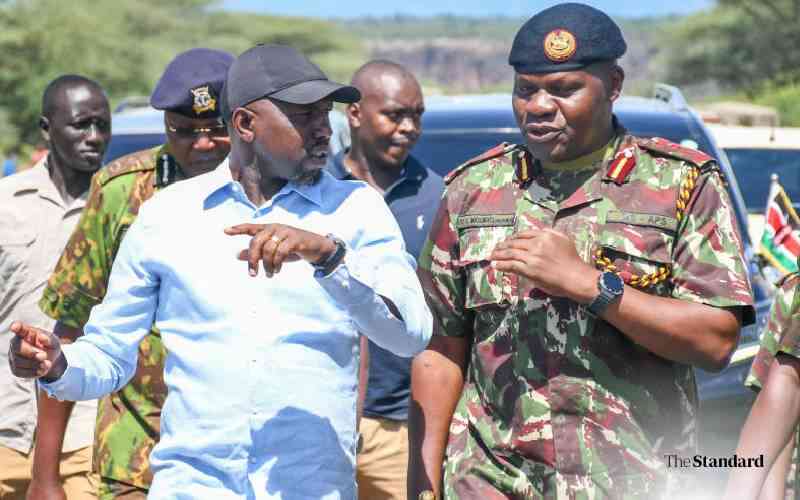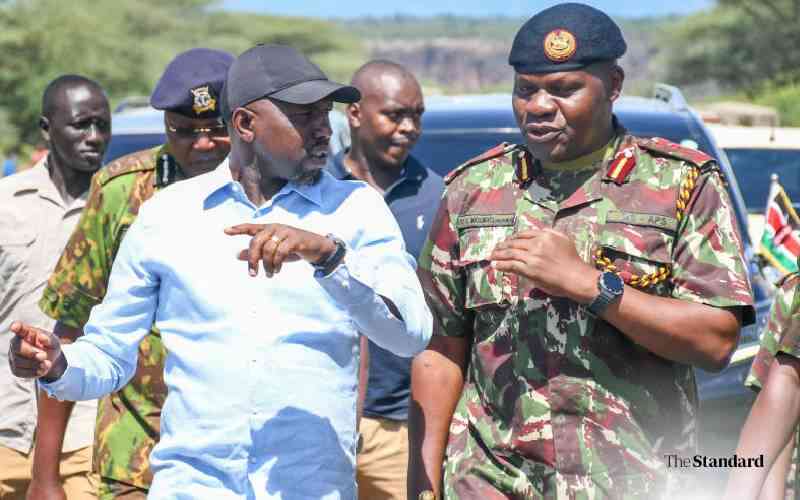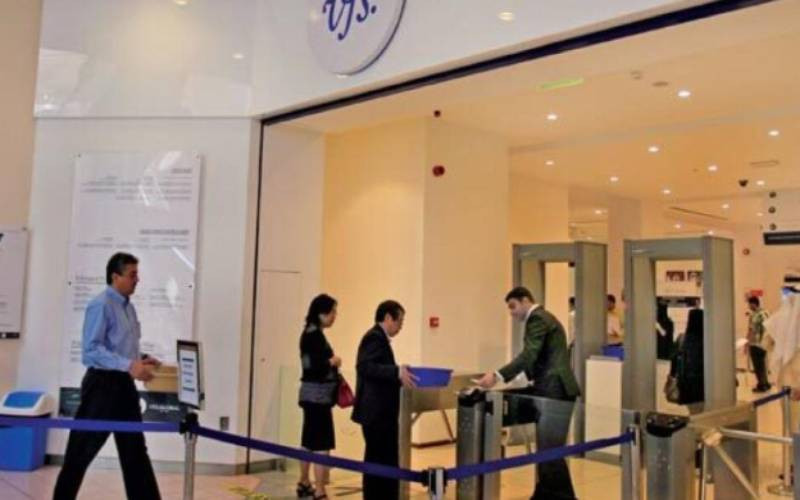Kenya’s second most important county is struggling to surmount myriad challenges. Dubbed the gateway to East and Central Africa because of hosting the principal seaport of the region, Mombasa is reeling under youth unemployment, drug abuse, poor education standards, land conflicts, dilapidated roads and battered tourism.
But authorities remain optimistic that they will restore the county’s former glory and even turn it into a major source of employment and land of plenty.
As a regional cultural and economic hub, the county hosts the Port of Mombasa that serves Kenya, Uganda, Rwanda, South Sudan, Burundi, northern Tanzania and eastern Democratic Republic of Congo (DRC). The county with a population of 1.2 million hosts Kenya’s second largest city, Moi International Airport and is also a tourism haven.
Mombasa’s bordering the Indian Ocean made it a historical trading centre since antiquity, which saw it controlled by many foreign powers including the Portuguese and Oman Arabs in the past because of its strategic location.
But even with its rich historic and attractive location, Mombasa has its fair share of challenges that give governor Hassan Joho headache as he attempts to shape the country’s main tourist destination.
The county has experienced a semblance of calm after a spate of terror attacks earlier in the year. But last week’s attack on a military barracks and AP camp in Malindi where the assailants were repulsed and the killing of an Imam in Likoni, brought to the fore the thorny issue of insecurity at the coast.
Joho has questioned why local people and security agencies are unable to bring this under control even after the county government provided over 40 cars , fuel and vehicle insurance for police mobility.
Mombasa is a case of poverty amid huge economic potential as it has a large seaport, international airport, ocean for commercial fishing, high-rated hotels and clean sandy beaches. But why the slow pace of transforming the county?
“Some of the key challenges we face are continuous marginalisation of Mombasa County by the Commission on Revenue Allocation formula, delay in disbursement of funds from national Treasury, inadequate allocation of resources to national institutions charged with overseeing and implementing devolution,” Joho says.
Business plan
CRA has allocated the county Sh4.5 billion against its budget of Sh12 billion and it is struggling to raise funds from other revenue sources amid the challenge of an estimated Sh4 billion wage bill for its 4,000 workers. The county government inherited 2,600 workers from the defunct Mombasa Municipal Council.
The county has projected to collect Sh6.7 billion but faces a number of hurdles. Kenya Ports Authority has rejected an attempt to collect harbour, transport and infrastructure levy from the Port of Mombasa while tourism faces one of its worst slumps.
But the private sector wants the county authorities stop lip service and ensure the poor state of roads, failing tourism, more street lights installed and stinking garbage, are addressed and a 24-hour economy introduced.
“We urge the governor and County Commissioner Nelson Marwa, to stop fighting and ensure there is security and a 24-hour economy to attract investments,” says James Mureu, Mombasa branch chairman of the Kenya National Chamber of Commerce and Industry (KNCCI).
He says the county operates without an integrated business plan and is yet to convene an investment conference even after KNCCI presented the Mombasa business plan.
“Mombasa should go the Machakos way. Leaders should stop activism and serve the people,” Mureu says.
Stay informed. Subscribe to our newsletter
He says the county should push for amendment of the State Corporations Act to enable it collect levies from Mombasa Port to boost its revenues.
Mr Sam Ikwaye, Executive secretary of the Kenya Association of Hotel-keepers and Caterers, says the county has had big plans but the challenge has been implementation.
He says insecurity, poor roads, water shortage, high levies and little efforts from the county government in marketing Mombasa as tourist destination, have contributed to the slump in the sector.
“We expect to enhance stakeholder consultation to revive the tourism sector and take this county forward,” Ikwaye says.
Joho says the county will capitalise on meetings, incentive travel conference and exhibitions to eliminate seasonality in the tourism sector and introduce exciting low altitude and water sports products to enhance tourists’ experience while in Mombasa.
On security, Joho says his government plans to launch a drug rehabilitation and linkage to economic activity after successful completion of the respective programmes.
“These efforts will ensure we begin to have the capacity required to deal with the harmful drug menace that is ravaging our youth,” he says.
Milk supply
Joho says he took office when statistics showed the county had at least 42 per cent of unemployed youth, and vows to deal with the problem. “This is a record high and triple the national average, further confirming the marginalisation of our county. This is a problem that we must fight aggressively to get our youth working and living in dignity again.”
He plans to launch the Mombasa Full Employment Initiative, this month, with the aim of achieving its goal by the year 2018.
“We have commenced several initiatives to deal with this growing threat including the proposed launching of the Imarisha Initiative on October 18. The initiative will seek to link the youth to jobs and the national 30 per cent access to government procurement initiative as well as provide opportunities for business training, fish farming, forklift training, diving seafaring and garbage collection,” Joho explains.
He says a pilot programme has been launched where hawkers and street traders will have access to initial 600 modern retail outlets this financial year.
Joho says construction and rehabilitation of roads has progressed at an undesirable rate with a total length of 15.5kms at a cost of Sh186.8 million in the last financial year, marking a 50 per cent completion rate.
“The delay by the Government in handing over of county roads is unfathomable and the constant attempt to re-classify the roads despite the clear guidelines in our Constitution is illegal,” says Joho.
The county has, however, installed traffic lights in a number of streets, re-organised traffic, and numbered ‘tuk tuks’ and ‘boda bodas’ to bring sanity on roads. This made it emerge best and earn the “Innovative Safety and Security of the Year Award from the National Safety Authority in Nairobi.
The governor plans to speed up settlement of squatters and rid the city of informal settlements by the year 2020. The county has an annual housing demand of 150,000 units, leading to the mushrooming of slums.
On education, the county has advertised tenders for construction of eight new modern nursery schools inculcating technology in teaching. The governor has launched the “Café 001 School Feeding Programme” which involves supply of milk to 2,000 children.
Garbage menace
“My government intends to increase the supply of school milk to 8,000 children and add the supply of porridge,” Joho explains.
County Chief officer for Water, Environment and Natural Resources Rajab Idd, says there are elaborate plans to fix the garbage menace as well as provide adequate water within the city.
According to him, the county has managed, through partnership, to roll out an elaborate beautification programme along main city roads such as Jomo Kenyatta Avenue, Moi Avenue, Nyerere Avenue, Nkrumah Road Haile Selassie Avenue and Abdul Nasser Road, and this would be extended to five other sub-counties.
“We have managed to give Mombasa a major facelift as a tourist destination and we urge stakeholders to partner with us,” Idd urges.
He says dealing with the 1,300 tonnes of garbage generated daily has been a daunting task but explains waste would be soon turned into a resource and a source of employment for the youth.
The county has partnered with a private entity to acquire 72 trucks, which have been placed in various centres to collect garbage and boost its existing six mobile trucks. The county government plans to establish 70 youth groups with 15 members each throughout the county to engage in organised garbage collection as employment.
“We also plan to set up a garbage recycling plant through a public private partnership arrangement as a long term solution to garbage management,” Idd says.
He says the county has partnered with Pivot Company to explore the possibility of manufacturing human waste into industrial charcoal, which may see such a waste being bought from households.
Alternative route
“In the next two to three years, human waste pallets may be sold as industrial charcoal. Every waste will be a resource in this county,” Idd says.
County Executive member of Water, Environment and Natural Resources Ms Fatma Awale, was reported to have travelled to the US in a delegation comprising officials from Kwale County and Coast Development Authority the for signing of a financing agreement for the Sh35 billion flagship project that also includes hydro-power generation.
Mombasa County plans to sink three boreholes in Likoni at Sh13.4 million to serve an estimated 100,000 residents and is also pushing for the establishment of a desalination plant (to turn sea water into fresh water) at Shanzu, to serve residents and beach hotels.
“It has been my solemn pledge that every household in Mombasa will have a water connection by the end of 2017,” Joho says.
Mombasa County is bracing itself for the construction of the over Sh40 billion (US$470 million) Mombasa southern bypass or Dongo Kundu bypass, expected to start next year as part of the Government’s vision 2030 flagship projects.
According to Infrastructure Principal Secretary John Mosonik, the project design may be completed in February, and bidding likely to start in March.
“We are at the design stage that is expected to be completed by end of February. We expect to float the tenders by March,” Mosonik said recently.
A huge bridge to provide a direct link between Mombasa and the South Coast is expected to offer an alternative route to the Likoni ferry crossing and spur economic development in Mombasa and Kwale counties particularly tourism, agriculture, trade and industry.
This will see the development of a Dubai-like free port that will create trade and employment opportunities. The project will create trade and employment opportunities. Other development projects include expansion of Likoni, Changamwe and Kisauni health facilities to be district hospitals and construction of three foot bridges at Kongowea and Changamwe.
 The Standard Group Plc is a
multi-media organization with investments in media platforms spanning newspaper
print operations, television, radio broadcasting, digital and online services. The
Standard Group is recognized as a leading multi-media house in Kenya with a key
influence in matters of national and international interest.
The Standard Group Plc is a
multi-media organization with investments in media platforms spanning newspaper
print operations, television, radio broadcasting, digital and online services. The
Standard Group is recognized as a leading multi-media house in Kenya with a key
influence in matters of national and international interest.
 The Standard Group Plc is a
multi-media organization with investments in media platforms spanning newspaper
print operations, television, radio broadcasting, digital and online services. The
Standard Group is recognized as a leading multi-media house in Kenya with a key
influence in matters of national and international interest.
The Standard Group Plc is a
multi-media organization with investments in media platforms spanning newspaper
print operations, television, radio broadcasting, digital and online services. The
Standard Group is recognized as a leading multi-media house in Kenya with a key
influence in matters of national and international interest.





